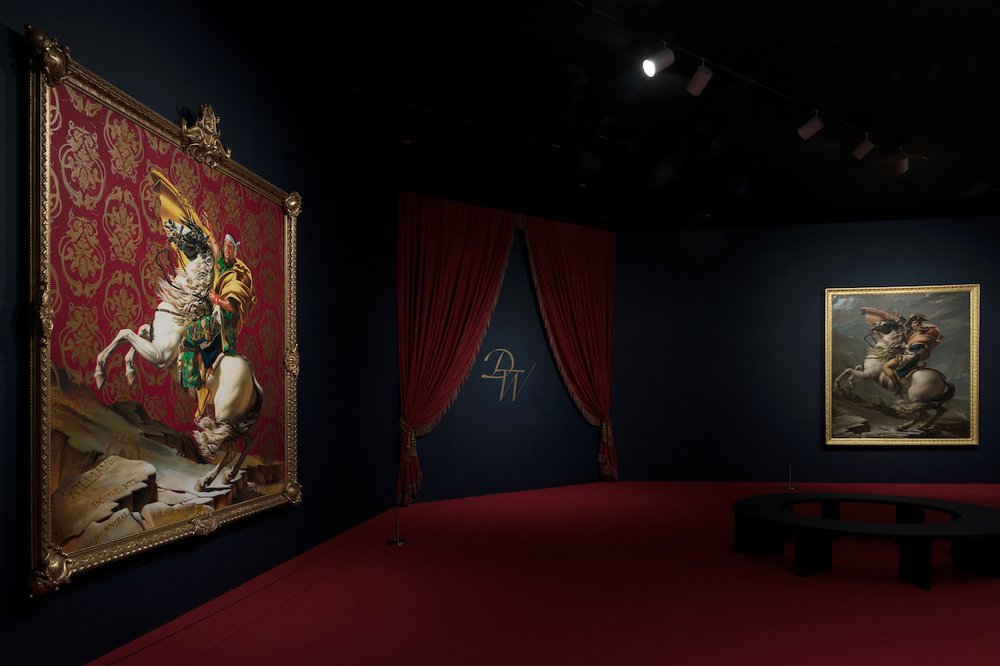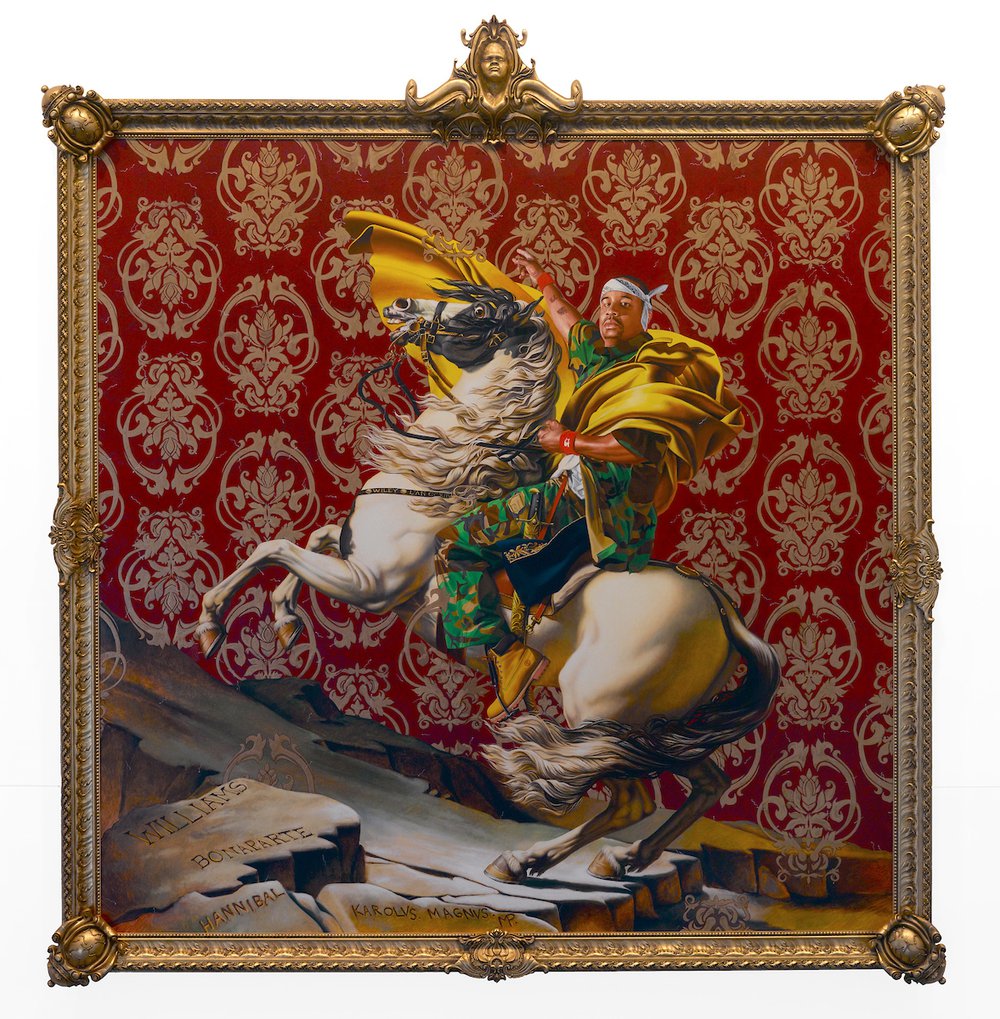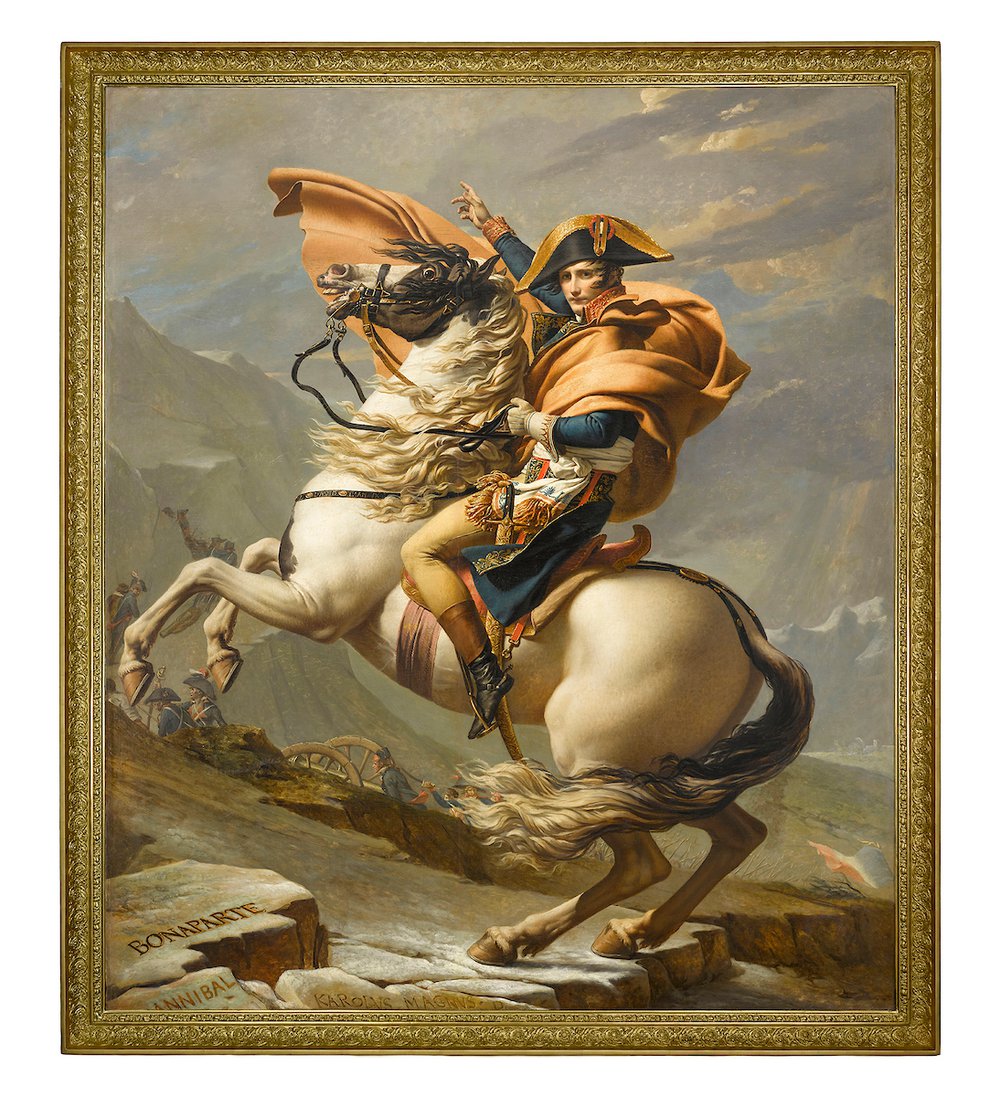Kehinde Wiley's Napolean Portrait Now Hanging Next To Its 1800s Counterpart
Feb. 17, 2020, 9:47 a.m.
This is the first time these two paintings — made 200 years apart — have been placed side by side.

On the left: A dramatically-lit, monumental oil painting of a black man on a ferocious rearing horse, his right finger pointing at the sky, his face cool and determined. He’s wearing camouflage fatigues and Timberlands, and a Starter wristband. Napoleon Leading the Army over the Alps (2005) is by Kehinde Wiley, best known for the presidential portrait of Barack Obama.

On the right: The painting it’s based on, the famous Bonaparte Crossing the Alps (1800) by Jacques-Louis David. In it, a white man — Napoleon Bonaparte — sits calmly on a rearing horse, his finger pointing at the sky. He’s wearing a bicorne hat in his trademark way — tilted sideways. It’s the first time this original has come to New York (you may have seen replicas — in those, Napoleon is usually wearing a red cloak instead of a yellow one).

Both portraits are part of the show Jacques-Louis David Meets Kehinde Wiley at the Brooklyn Museum. This is the first time these two paintings — made 200 years apart — have been placed side by side.
Wiley’s body of work draws attention to the way black people are missing as heroic figures in the classic Western canon. This portrait is part of his Rumors of War series; another piece, a monumental bronze statue of a black man riding a horse, was recently in Times Square.
In a museum video, Wiley says that these kinds of portraits are really about dominance and power. “One of the things that for me is fascinating about this entire language of painting is the ways that it convinces people so thoroughly about the power of an individual within the world.”
And domination, he says, “ultimately has to do with visibility. In these paintings, I'm demanding that we see and take seriously what heretofore had been considered marginal voices."
Wiley seems to poke fun at this desire for dominance by including many, many sperm swimming across the background. They’re easy to miss unless you know they are there since they blend so easily into the lush red-and-gold wallpaper behind the horse. But take a close look — and then move your gaze to the corners of the frame, where more sperm swim happily. Above the painting, crowning it, is a small bas relief of Wiley himself, being born.
But David took the propaganda of power seriously. He was trying to please a patron, after all — King Charles IV of Spain, who was trying to win Napoleon’s favor (he was First Counsel of France at the time; in a few years, he would declare himself emperor). In the background of David’s painting is the French infantry climbing an Italian mountain, tricolor flag waving. These kinds of portraits of white, male military leaders on horses were historically used both to show the power of an authority figure, and to increase that power. It’s essentially just branding.
In real life, Napoleon didn’t lead the French army across the Alps. They crossed on foot and he followed a few days later in considerably less heroic fashion — by mule.